Case: How to sell 10,000 products on 1 landing page and earn an additional 5,000,000 rubles per month

Marketers and business owners often solve extraordinary tasks. In the previous article, we showed how to make a profit from non-working queries in contextual advertising.
And today we will look at how to make multilending for several types of products from different segments. How to simultaneously sell air conditioners and women's dresses? Given that this does not violate the rule “One page - one offer”.
10,000 products on one page
')
It was with this task that one of the clients addressed us. The company is engaged in the wholesale supply of goods in ten completely different directions. For example, mobile gadgets, children's toys, electronics, cosmetics, garden tools.
The usual practice in such cases is a corporate site and 10 landing pages for each direction. Even better - a bunch of landing pages for medium and high frequency requests. Because users are not looking for "electronics", but for a specific product. For example, "wholesale monopods." The deeper the segmentation of the target audience and the personalization of the offer, the higher the effectiveness of the advertising campaign.
In this case, the owners of the company neglected this rule and made a one-page for “the sale of 10,000 domestic and imported goods”:
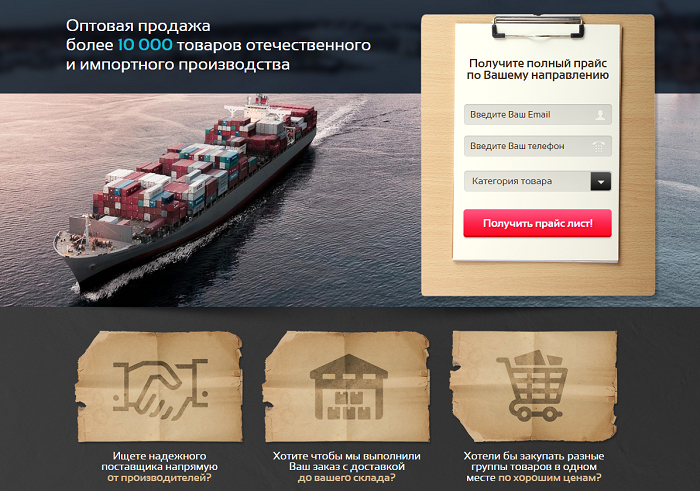
Moreover, they initially provided for setting up dynamic content using the Yagla service. It was interesting to see how it works. The Yandex.Direct campaign is configured for 10,859 product requests in the wholesale purchase niche. For example, "Wholesale monopod" or "Wholesale Lego designer." One of the advertisements:

In the original, the only similarity of personalization is the choice of the category of goods in the application form, as well as the choice of the direction of interest on the second screen. For example, electronics. Call to action - get a price list:
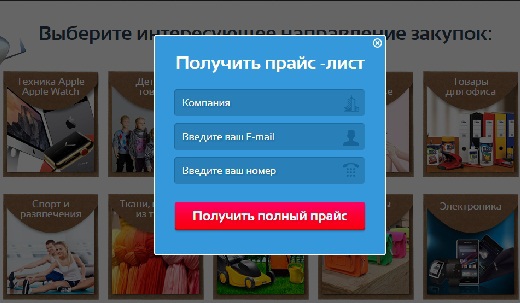
It is not clear what a potential customer will receive - a price list on electronics or on the entire range. And he does not see any specific information on monopods, which, in fact, interest him.
Therefore, the company's advantages in the form of prices from the manufacturer, delivery to the warehouse and the purchase of different groups of goods in one place - past the user's goal. There is a discord between the client’s need and the offer on the landing page.
Dynamic content for different types of products
10,859 requests from the Republic of Kazakhstan to Yandex.Direct were synchronized with Yagla through the API and uploaded to the table of substitutions. We recommended grouping: homogeneous requests were grouped together and a substitution was made for each of them (a total of 1,425 substitutions).

First of all, the substitutions concern the page title and the signature to the application form on the first screen:

In our example with monopods, the correspondence (relevance) of the user's needs with the content on the first screen appeared. The client wants to buy monopods - he sees the corresponding offer. Similarly, there is an adjustment to other requests. One more example:
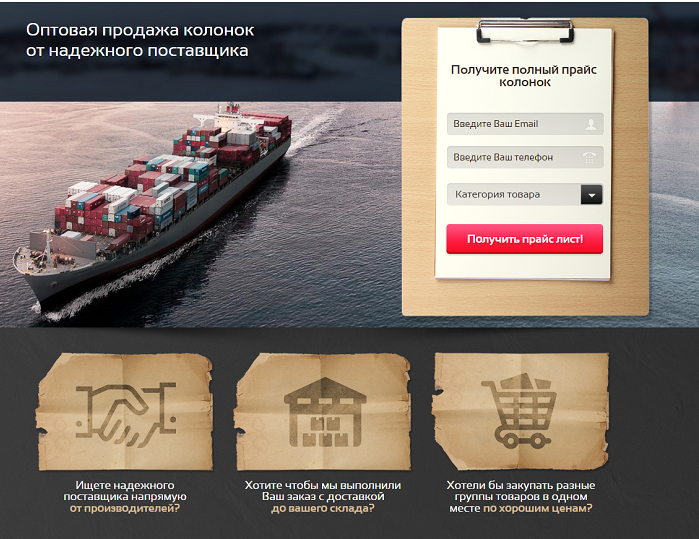
The campaign in Yandex.Direct was configured simultaneously with adaptive content. Yagla compares the effectiveness of the original version and each substitution using the automatic a / b testing system.
After 3 weeks, the first results were obtained: the conversion of the original to the application amounted to 5.1%; substitution conversion by monopods 7.56%. For other options - from 5.5 to 8.7%.
An important point: in most cases, the coincidence of the replaced header with the request brings a minimal return. This is the main mistake of multibanding. Top 4 critical errors adaptive pages, see this article .
The task is not just to adjust the content for requests, but to segment the audience and create personalized offers.
Users make decisions based on the value of the offer. Therefore, the next step was the 4U header modeling:
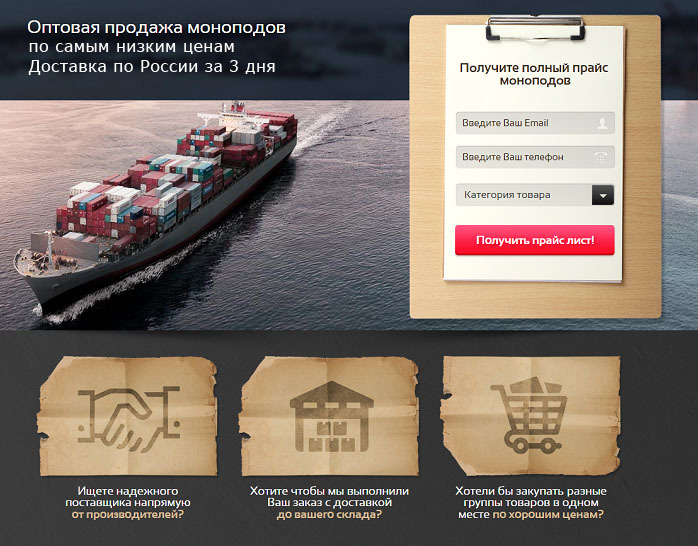
The control test after 3 weeks showed a conversion of a new version of 15.3%, that is, an increase of more than 100% compared to the “Wholesale of monopods”. Conversion of the original page is stable within 4.8-5.2%. Record efficiency in the substitution on request "Buy e-books in bulk" (17.5%):

The important point: the substitution must be customized for the most conversion elements, where personalization greatly influences the target action. In our example, we changed the signature to the lead form on the second screen:
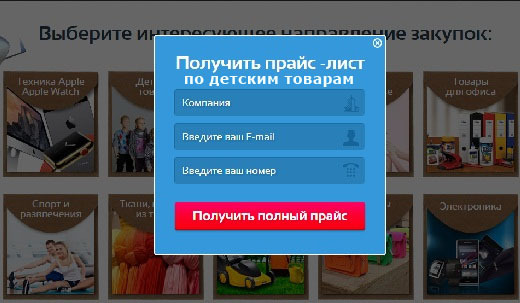
and the title to the form of delivery calculation:
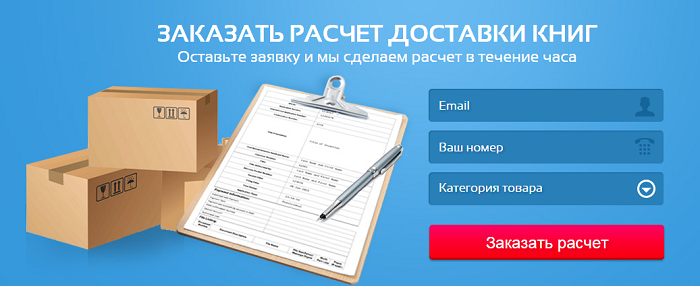
The remaining elements were left in their original form. For example, the form at the end of the page:

This makes it easy to set up changes and analytics a / b tests. We recommend changing no more than five elements on one page in order not to get confused and get an accurate understanding of the effectiveness of adaptive content.
Conclusion
For 1.5 months of testing dynamic content, the conversion of substitutions exceeded the original figure from 61 to 297% for different groups of requests. The best were “shot” by the categories “Electronics” and “Kids Products”, where the headings were modeled according to the 4U scheme. In monetary terms, for a company with similar turnover, this is 4-5 million of additional revenue.
We are often asked: "How to apply responsive content not on landing pages, but in ordinary online stores?". Therefore, in the next article we will analyze the case of an online clothing store, which tested the substitution of headings in categories and in cards of the most marginal goods.
With you was Alexander Alimov, Head of Yagla.ru
See you in a week!
Source: https://habr.com/ru/post/290450/
All Articles